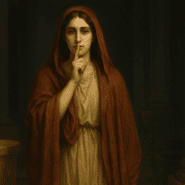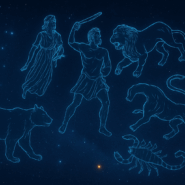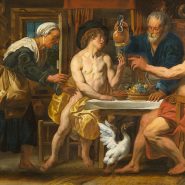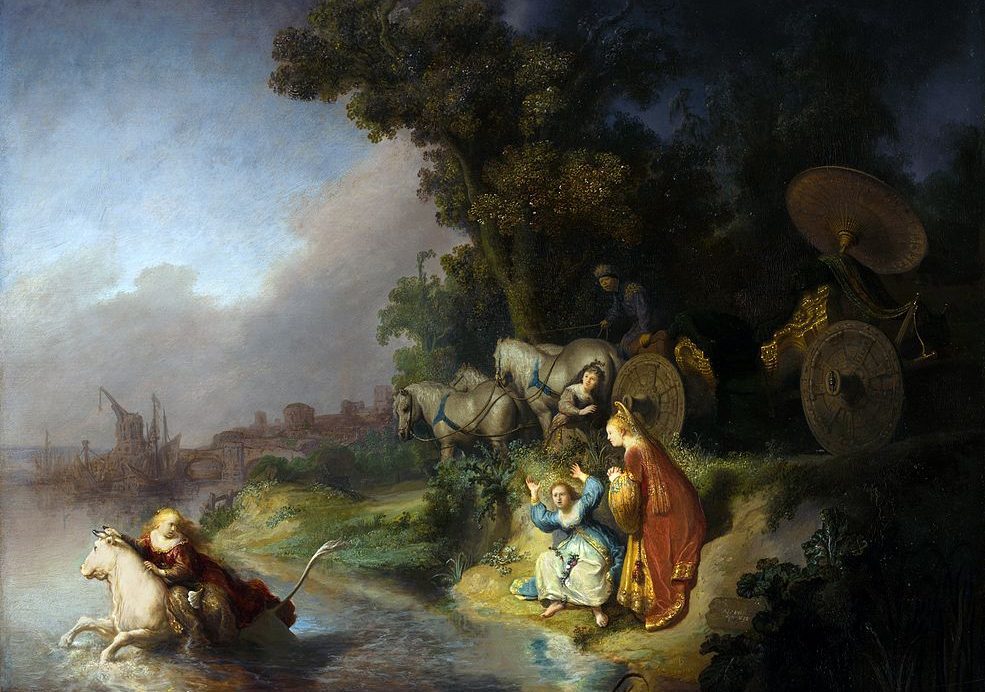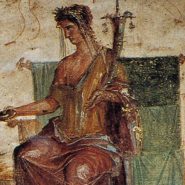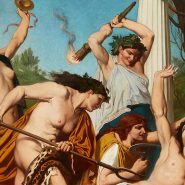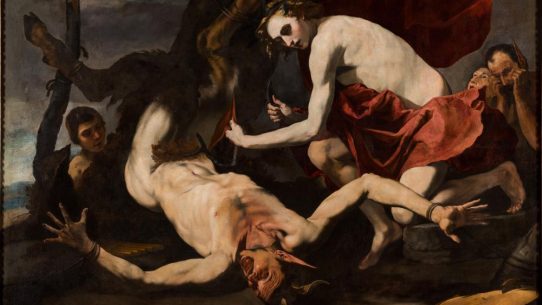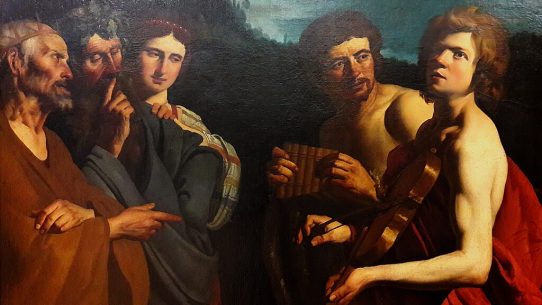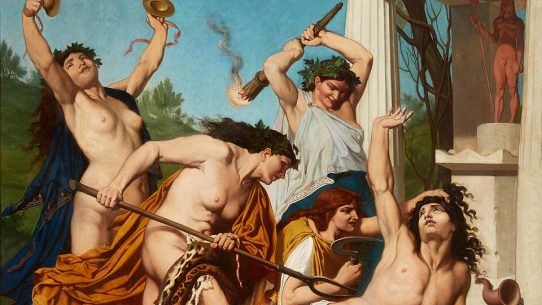Europa is one of antiquity’s most luminous figures: a mortal woman whose beauty bridges nations, continents, and gods. Her story, preserved in Ovid’s Metamorphoses and Roman retellings, tells of a young Phoenician princess whose grace captivated Jupiter.
Disguised as a bull, the king of gods carried her across the sea to Crete, where she became the mother of a new line of kings. The myth unites themes of desire, transformation, and destiny — the moment when the mortal world yields to the divine, and history begins its long crossing from East to West.
Characters and Setting
Europa was the daughter of King Agenor of Tyre, a city on the bright shores of Phoenicia. Her name, later given to an entire continent, means “broad-faced” or “wide-eyed,” suggesting vision and openness.
Her companions were maidens of noble birth, daughters of the sunlit coast. The sea before them was calm, the air heavy with scent of blossoms, and the world seemed innocent of deceit. Yet Jupiter, watching from Olympus, saw her playing by the shore and felt his heart inflamed. Love, in the divine as in the human, is both impulse and design — and it would soon change the map of myth forever.
The Bull on the Shore
To approach her without terror, Jupiter chose disguise. He took the form of a bull, but one unlike any seen by mortal eyes. His coat shone white as marble, his horns curved smooth and translucent like the new moon, and his gaze held gentleness instead of rage.
He lay down among the heifers, pretending to graze, until Europa’s curiosity overcame her caution. She reached out to touch his flank, finding it warm and living beneath her palm. Her laughter rose like music above the surf as she wove flowers into his mane.
When he knelt before her, she climbed upon his back, thinking it a jest, unaware that the god had already claimed her destiny.
The Crossing of the Sea
The bull stepped into the shallows, his hooves darkening with foam. Europa clung to his neck as the water rose.
When the waves closed around them, she realized she was far from shore. Her heart trembled between fear and wonder. Yet the bull’s motion was smooth, his breath steady, and the sea itself seemed to obey him. Dolphins leapt beside them in play, and the Nereids sang hymns of passage.
The world she had known — the palace, the gardens, the shore — shrank behind her, while before her stretched the boundless sea, glittering under the gaze of gods.
The Revelation in Crete
At last, they reached the island of Crete, the cradle of future kingdoms. There, on a meadow bright with crocus and thyme, the bull halted and revealed his true form. Jupiter stood radiant before her, crowned with thunder and calm majesty.
He told Europa not to fear, for she had been chosen not as prey but as partner in the creation of a new lineage. From their union would come Minos, Rhadamanthus, and Sarpedon — kings and judges who would shape the moral order of men. Jupiter promised her honor, not abandonment.
The world’s memory would carry her name forever, and her image would rise to the stars in the form of Taurus, the white bull of heaven.
Europa’s Legacy
Europa’s story did not end with divine embrace. In Crete, she became queen, ruling with dignity and grace. Her sons each embodied an aspect of her fate: Minos, the lawgiver; Rhadamanthus, the just; and Sarpedon, the wanderer. Through them, Europa’s lineage reached into the fabric of Roman thought — the belief that order is born of passion refined by purpose.
Her abduction became less a tale of violation than a symbol of civilization carried across the waters, where divine impulse becomes human destiny.
Symbolism and Interpretation
To Roman interpreters, the abduction of Europa was a myth of convergence. The bull, powerful yet controlled, represented Jupiter’s dual nature — ruler of storm and guardian of peace. The sea symbolized the boundary between known and unknown, between homeland and empire.
Europa’s journey across it mirrored the spread of culture from East to West, from the mystery of Phoenicia to the reason of Rome. Her calm acceptance at the end revealed not submission but transformation: she became a vessel of divine intention, the mortal through whom the gods shaped the future world.
Cultural Legacy
In Roman art and poetry, Europa was celebrated as the mother of civilization. Mosaics showed her astride the bull, the waves curling like ribbons beneath her feet. Coins bore her name as a symbol of abundance and peace. Philosophers read her story as the union of passion and law, the founding of order through encounter with the divine.
The myth’s endurance through centuries proves its power — not merely as a love story, but as the eternal allegory of crossing, transformation, and the birth of identity from journey.
Gods involved: Jupiter, Neptune
Based on classical sources in the public domain, including Ovid’s Metamorphoses and related translations available via Project Gutenberg and Wikisource.
